
Moldova: The Hidden Gem of Romania
Discover Moldova, Romania: A land of painted monasteries, scenic landscapes, and rich traditions, perfect for history buffs, nature lovers, and cultural explorers.
Moldova, a historical region in northeastern Romania, offers a rich tapestry of culture, history, and natural beauty. Known for its rolling hills, picturesque monasteries, and charming villages, Moldova is a destination that invites tourists to step back in time and experience the heart of Romanian traditions. The region is famed for its painted monasteries, particularly those in Bucovina, which are UNESCO World Heritage sites. These monasteries feature vibrant frescoes that depict biblical scenes and local history, making them a must-see for any visitor interested in art and architecture. The towns of Suceava and Iași are cultural hubs where you can explore medieval fortresses, grand cathedrals, and bustling markets. Nature lovers will find plenty to admire in Moldova's scenic landscapes. The Carpathian Mountains provide opportunities for hiking, while the many rivers and lakes offer tranquil spots for fishing and relaxation. For a taste of local life, visit the traditional villages where time seems to stand still, and you can witness age-old crafts and customs. Moldova is also known for its hospitality and delicious cuisine. Savor traditional dishes like mămăligă (cornmeal porridge) and sarmale (cabbage rolls) in family-run restaurants. Don't forget to sample the local wines, as the region is home to some of Romania's oldest vineyards.
Local tips in Moldova area
- Visit the painted monasteries early in the morning to avoid crowds.
- Pack comfortable shoes for walking, as many attractions are best explored on foot.
- Try to learn a few basic Romanian phrases; locals appreciate the effort.
- Carry cash; small villages and markets may not accept credit cards.
- Taste local wines and bring some home as a souvenir.
Moldova: The Hidden Gem of Romania
Moldova, a historical region in northeastern Romania, offers a rich tapestry of culture, history, and natural beauty. Known for its rolling hills, picturesque monasteries, and charming villages, Moldova is a destination that invites tourists to step back in time and experience the heart of Romanian traditions. The region is famed for its painted monasteries, particularly those in Bucovina, which are UNESCO World Heritage sites. These monasteries feature vibrant frescoes that depict biblical scenes and local history, making them a must-see for any visitor interested in art and architecture. The towns of Suceava and Iași are cultural hubs where you can explore medieval fortresses, grand cathedrals, and bustling markets. Nature lovers will find plenty to admire in Moldova's scenic landscapes. The Carpathian Mountains provide opportunities for hiking, while the many rivers and lakes offer tranquil spots for fishing and relaxation. For a taste of local life, visit the traditional villages where time seems to stand still, and you can witness age-old crafts and customs. Moldova is also known for its hospitality and delicious cuisine. Savor traditional dishes like mămăligă (cornmeal porridge) and sarmale (cabbage rolls) in family-run restaurants. Don't forget to sample the local wines, as the region is home to some of Romania's oldest vineyards.
When is the best time to go to Moldova area?
Iconic landmarks you can’t miss
Bran Castle
Explore the mysterious Bran Castle, a stunning Transylvanian fortress filled with history, folklore, and breathtaking views amidst the Carpathian Mountains.

Peleș Castle
Discover the grandeur of Peleș Castle, Romania's architectural jewel set in the stunning Carpathian Mountains, a must-see for every traveler.
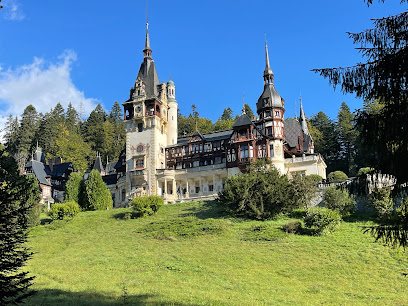
Castelul Corvinilor (Corvins' Castle)
Explore Castelul Corvinilor, a stunning Gothic-Renaissance castle in Hunedoara, Romania, rich in history and architectural beauty.
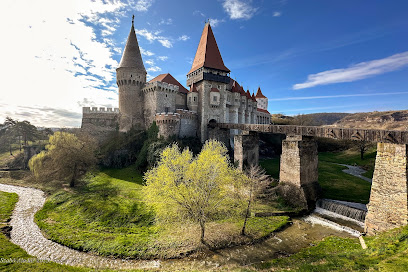
Voroneț Monastery
Discover the breathtaking Voroneț Monastery, a UNESCO World Heritage site renowned for its stunning frescoes and tranquil atmosphere in Bucovina, Romania.
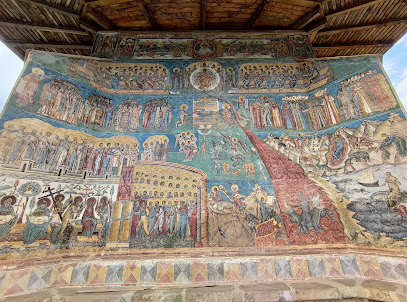
Palace of Culture
Explore the Palace of Culture in Iași, a stunning museum that embodies Romania's rich history and vibrant cultural heritage.
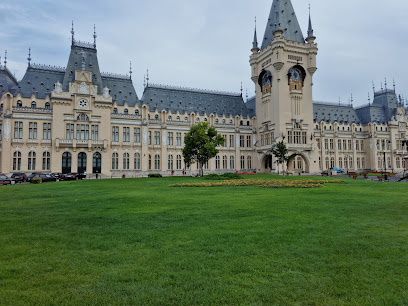
Stephen the Great Central Park
Explore the lush landscapes and historical landmarks of Stephen the Great Central Park in Chișinău, a tranquil retreat for all travelers.
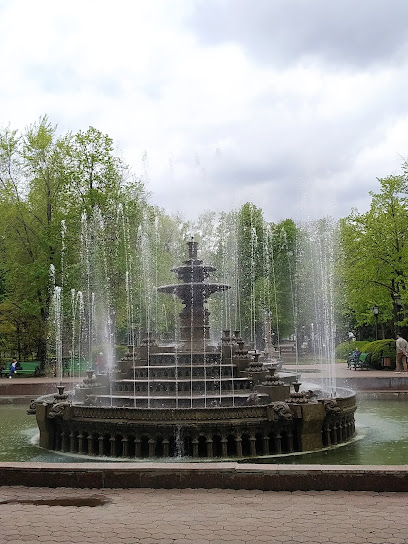
Metropolitan Cathedral Iasi
Discover the grandeur and spiritual serenity of the Metropolitan Cathedral in Iași, the largest Orthodox cathedral in Moldova, a must-visit historical landmark.
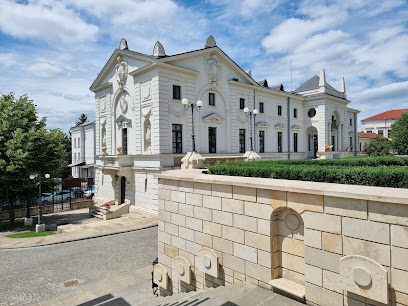
Sucevita Monastery
Discover the breathtaking frescoes and tranquil serenity of Sucevita Monastery, a UNESCO World Heritage gem in Romania's Moldavian region.
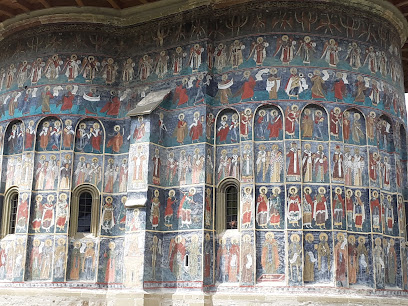
Rupea Citadel
Explore Rupea Citadel, a historical fortress in Transylvania offering stunning views and a rich tapestry of medieval history.
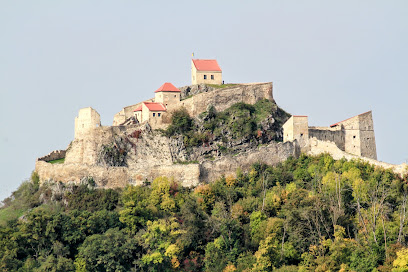
The Clock Tower
Discover the captivating Clock Tower in Sighișoara, a UNESCO World Heritage Site, showcasing medieval architecture and stunning views.

Moldovita Monastery
Explore the enchanting Moldovita Monastery, a UNESCO World Heritage site, boasting stunning frescoes and a serene atmosphere in Romania's picturesque countryside.
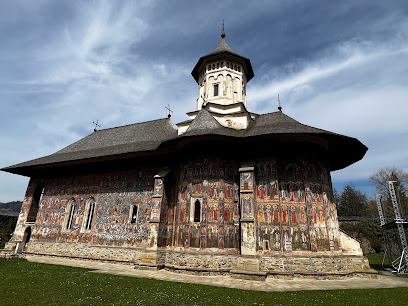
Humor Monastery
Discover the artistic splendor and tranquil beauty of Humor Monastery, a UNESCO World Heritage site in Romania's picturesque Moldavian region.
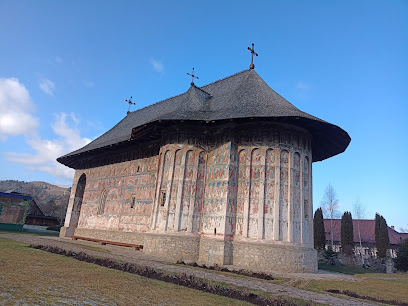
Bigar Cascade Falls
Discover the breathtaking beauty of Bigar Cascade Falls, a stunning natural wonder in Romania surrounded by lush forests and tranquil landscapes.

Gara Mocănița Huțulca, Moldovița
Explore the picturesque landscapes and rich heritage of Gara Mocănița Huțulca, a captivating steam train experience in Moldovița, Romania.
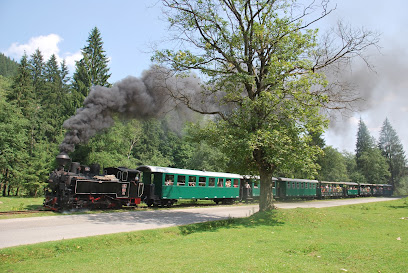
The Triumphal Arch
Discover the grandeur of The Triumphal Arch in Chișinău, a historical monument celebrating Moldova's resilience and architectural beauty.
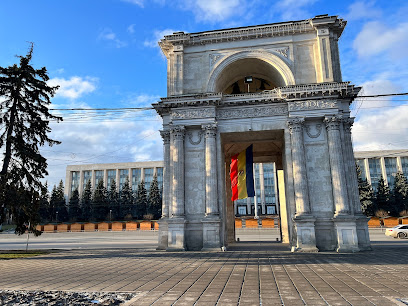
Unmissable attractions to see
Rose Valley Park
Experience the natural beauty and tranquility of Rose Valley Park in Chișinău, Moldova, a perfect destination for relaxation and exploration.

Valea Morilor Park
Discover the tranquility of Valea Morilor Park, a lush green oasis in Chișinău offering scenic views, cultural events, and relaxation for all visitors.
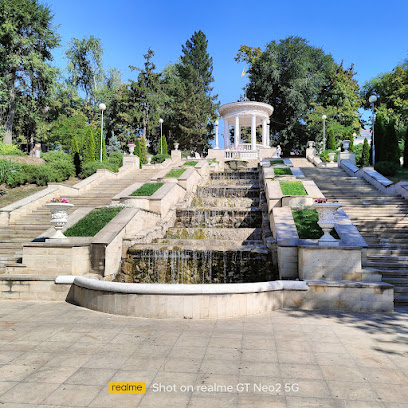
Neamț Citadel
Explore Neamț Citadel, a historic fortress and museum that offers breathtaking views and a deep dive into Romania's rich heritage.
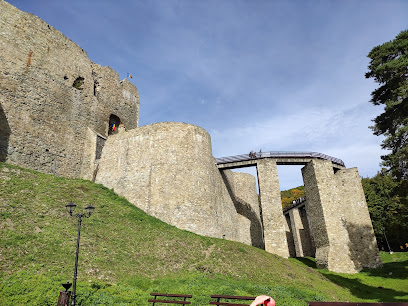
Rupea Citadel
Discover Rupea Citadel, a historic fortress in Transylvania, offering breathtaking views and a rich tapestry of Romanian history.
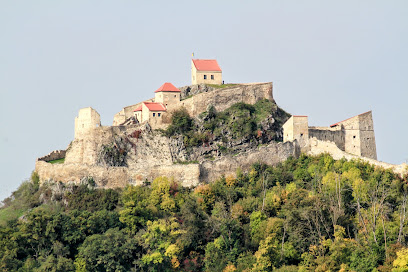
Dendrariu Park
Explore the natural beauty and tranquility of Dendrariu Park in Chișinău, a perfect escape for nature lovers and tourists alike.
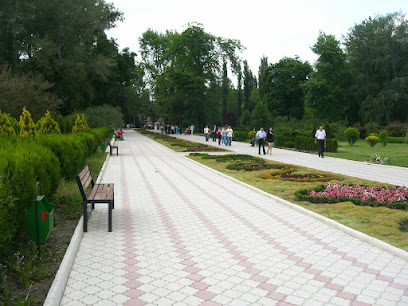
Zdrelo Spa
Experience unparalleled relaxation and wellness at Zdrelo Spa in Serbia, a perfect getaway for rejuvenation amidst serene landscapes.
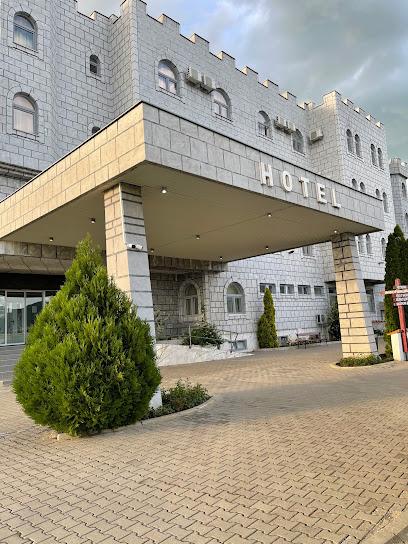
Alexandru Ciubotaru National Botanical Garden
Explore the Alexandru Ciubotaru National Botanical Garden, a lush haven in Chișinău, featuring diverse plant species and serene landscapes perfect for relaxation.

The Triumphal Arch
Discover the Triumphal Arch in Chișinău, a historic monument symbolizing resilience, surrounded by vibrant culture and spirited gatherings.
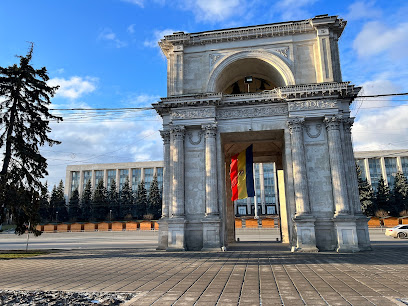
Palace of Parliament
Explore the magnificent Palace of Parliament in Bucharest, a monumental symbol of Romania's architectural ambition and historical complexity.
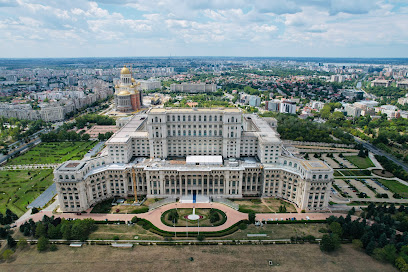
Stephen the Great Monument
Explore the Stephen the Great Monument in Chișinău, a stunning tribute to Moldova’s legacy, nestled in the serene Stefan Cel Mare Park.
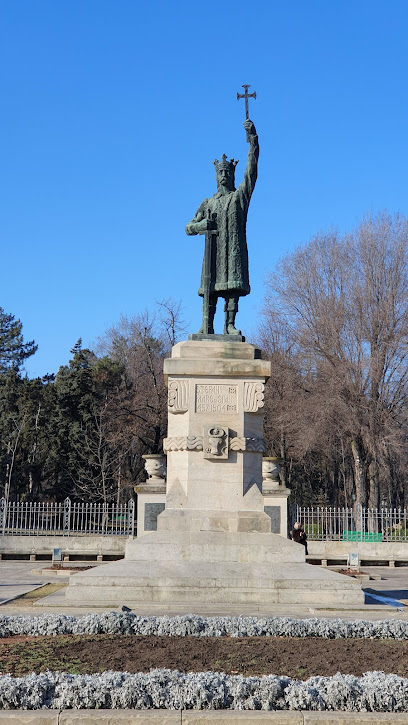
National Museum of Ethnography and Natural History
Discover the rich cultural and natural heritage of Moldova at the National Museum of Ethnography and Natural History in Chișinău, a treasure trove for curious travelers.
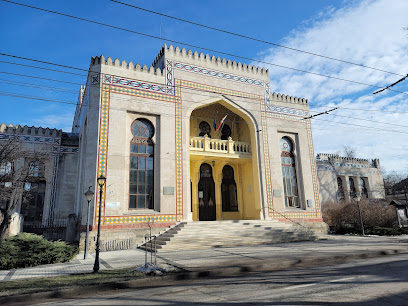
National History Museum of Moldova
Discover the rich tapestry of Moldova's history at the National History Museum, a treasure trove of artifacts and exhibitions in Chișinău.
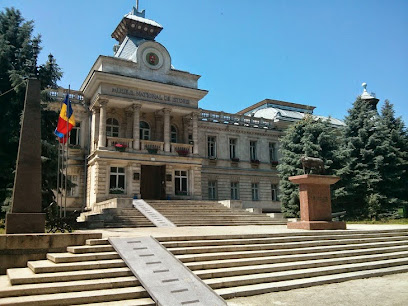
The Devil's Pond
Discover the enchanting beauty of The Devil's Pond in Covasna, Romania – a serene escape into nature's hidden wonders.
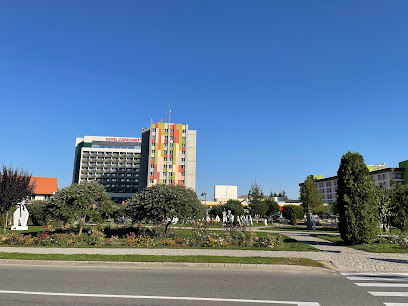
Hâncu Monastery
Discover the serene beauty and rich history of Hâncu Monastery, an essential stop for spiritual seekers and culture enthusiasts in Moldova.
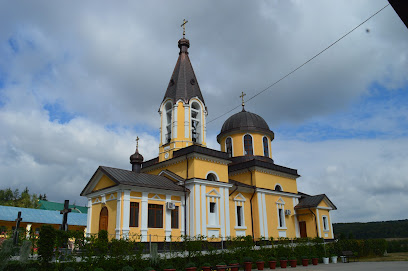
Beusnita Waterfall
Explore the enchanting Beusnita Waterfall, a breathtaking natural wonder in Romania, perfect for adventurers and nature lovers alike.
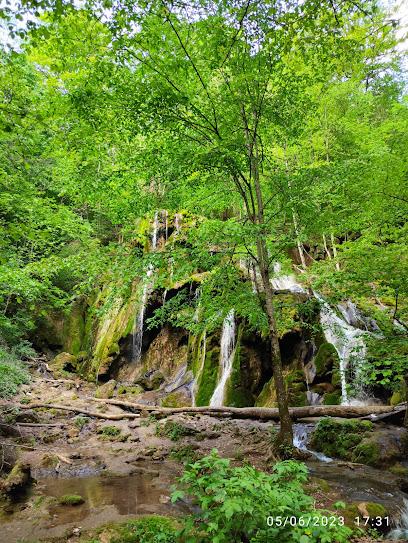
Essential places to dine
Caru' cu bere
Discover authentic Romanian cuisine at Caru' cu bere in Bucharest – where history meets flavor in a vibrant atmosphere.
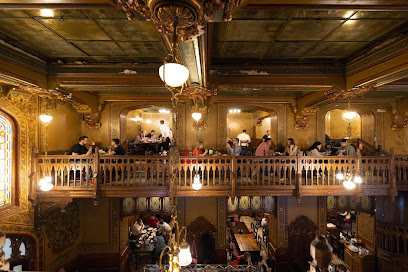
Gerendás Panzió
Savor the authentic flavors of Hungary at Gerendás Panzió in Ghindari – where every meal tells a story.
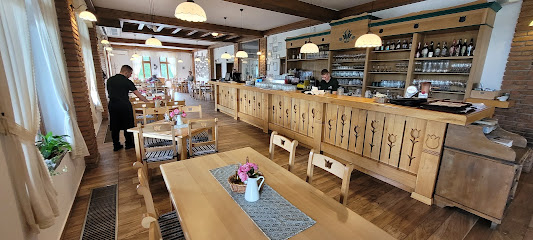
Restaurant Șura Dacilor
Experience authentic Romanian cuisine at Restaurant Șura Dacilor in Brașov - where tradition meets modern dining.

Casa Tudor
Discover the rich flavors of Romanian cuisine at Casa Tudor in Brașov - where tradition meets culinary excellence.
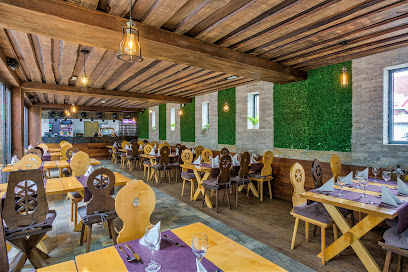
Roata Norocului
Discover exquisite Romanian cuisine at Roata Norocului in Brașov – where tradition meets flavor in every bite.
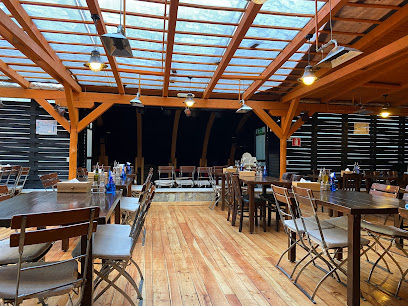
Restaurant Cascada
Discover authentic Romanian flavors at Restaurant Cascada in beautiful Slănic Moldova—where every meal is a celebration of local culinary traditions.

Casa Romaneasca
Experience authentic Romanian cuisine at Casa Romaneasca in Brașov – where tradition meets flavor in every dish.
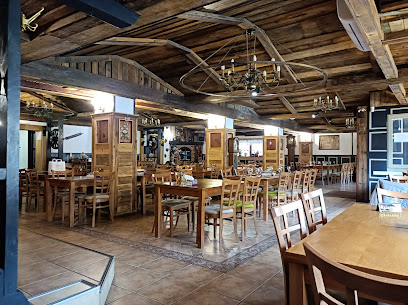
Restaurant Moldavian Burger
Discover the culinary delights at Moldavian Burger in Târgu Neamț - where traditional Romanian flavors meet modern dining.

Restaurant Mestecăniș
Experience authentic Romanian cuisine at Restaurant Mestecăniș in a cozy setting with locally sourced ingredients and exceptional service.
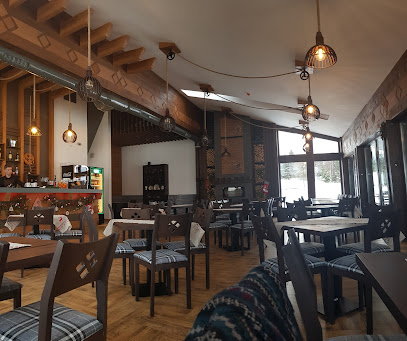
Dante Café & Dine
Experience delightful dining at Dante Café & Dine in Alba Iulia - where local flavors meet international cuisine in an inviting atmosphere.
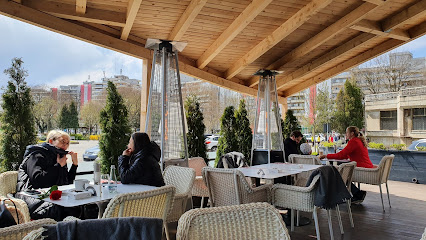
Casa Doina
Experience exquisite traditional Romanian cuisine at Casa Doina in Bucharest, where elegance meets local flavors.

Complex Herăstrău
Experience fine dining and family fun at Complex Herăstrău in Bucharest – where every visit is a celebration by the lake.

Cabana Vânătorilor
Discover culinary delights and cozy accommodations at Cabana Vânătorilor in Predeal – where nature meets exquisite dining.
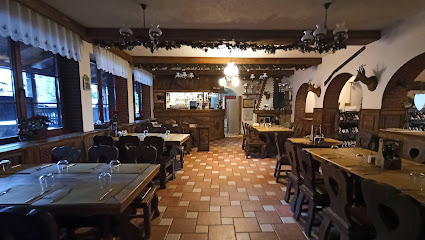
Cârciuma Veche
Discover the essence of Romanian cuisine at Cârciuma Veche - where tradition meets flavor in every dish.
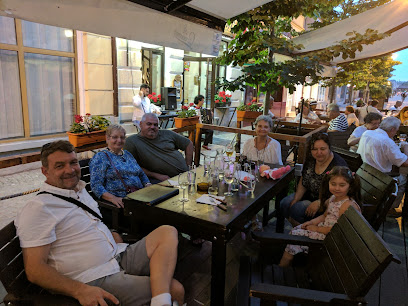
Transilvania
Experience authentic Romanian cuisine at Transilvania in Brașov—where tradition meets flavor in every dish.
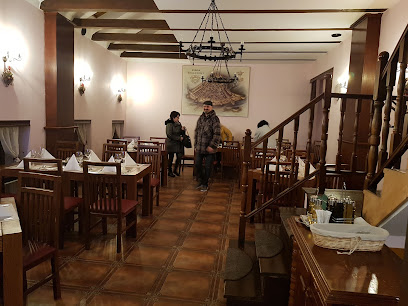
Markets, malls and hidden boutiques
AFI Cotroceni
Experience the vibrant essence of Bucharest at AFI Cotroceni, the ultimate shopping and entertainment destination in Romania.
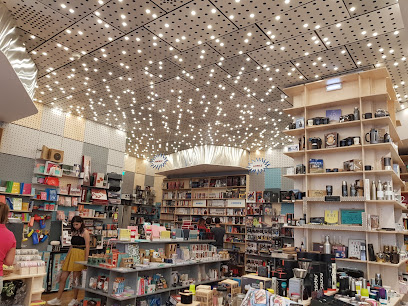
City Park Mall
Discover a shopping paradise at City Park Mall, Constanța, where fashion, food, and fun come together in a vibrant atmosphere.

Coresi Shopping Center
Experience the ultimate shopping adventure at Coresi Shopping Center, Brașov's premier destination for shopping, dining, and entertainment.

Promenada
Discover Promenada, Bucharest's vibrant shopping mall featuring diverse retail, dining, and entertainment options for a memorable experience.
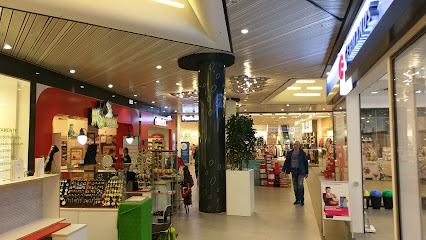
Unirea Shopping Center
Discover a shopping paradise at Unirea Shopping Center in Bucharest, where diverse shops, delicious dining, and entertainment await every visitor.
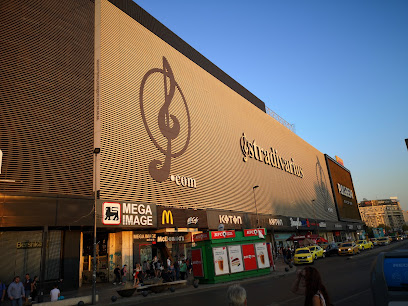
Shopping City Timișoara
Discover Shopping City Timișoara, a shopping paradise in Romania with diverse stores, delightful dining, and exciting entertainment options for all ages.
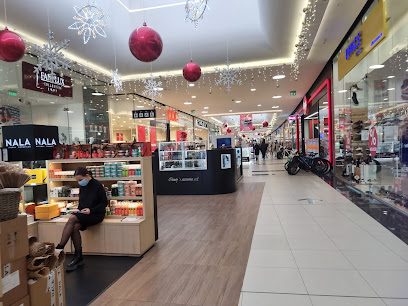
Shopping MallDova
Discover the ultimate shopping experience at Shopping MallDova in Chișinău, where luxury meets local charm in a vibrant atmosphere.
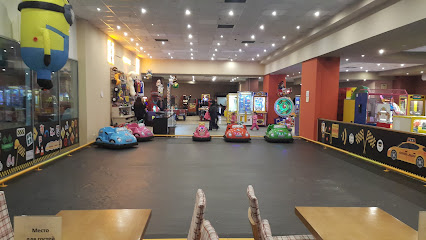
Iulius Mall
Discover a vibrant shopping experience at Iulius Mall, Suceava's premier destination for fashion, dining, and entertainment.
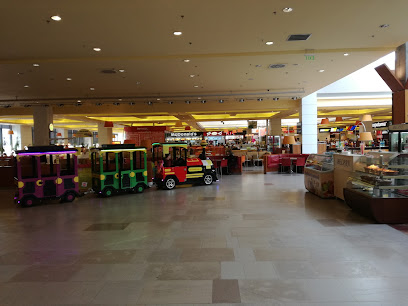
Moldova Center
Experience the vibrant blend of commerce and culture at Moldova Center in Iași, Romania, a premier destination for both shopping and dining.
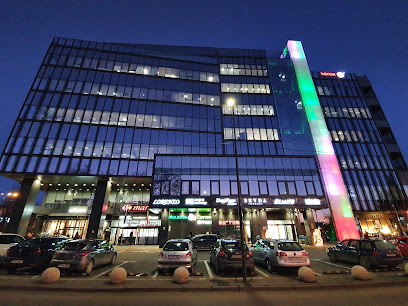
Romanian Boutique
Explore Romania's cultural treasures at the Romanian Boutique, where unique handcrafted souvenirs await in the heart of Bucharest.
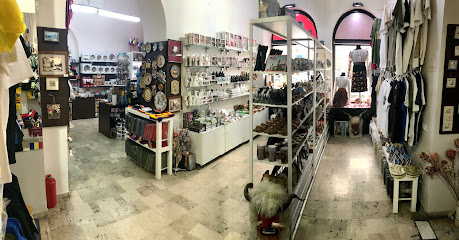
Kaufland Ungheni
Explore Kaufland Ungheni, the ultimate destination for quality shopping in Moldova, offering a wide range of fresh produce and international groceries.

The Souvenir Shop
Discover the heart of Romania at The Souvenir Shop, where unique crafts and local delicacies await to create unforgettable memories.

my romanian store
Explore My Romanian Store in Bucharest for unique handcrafted souvenirs that embody the essence of Romania's rich culture and artistry.

Chic Bijoux - Jewelry Shop
Discover Chic Bijoux, a jewelry haven in Cluj-Napoca, blending local craftsmanship with unique gifts for unforgettable memories.

Linella
Discover local flavors and vibrant shopping culture at Linella Supermarket in Ungheni, Moldova, a must-visit for every traveler.
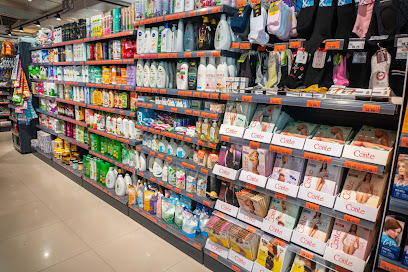
Essential bars & hidden hideouts
Legend Pub
Discover the vibrant nightlife at Legend Pub in Iași, where delicious food, great drinks, and a lively atmosphere await you.
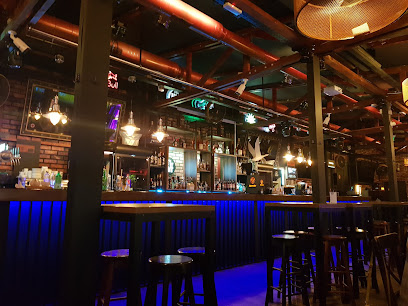
Budweiser Grill & Pub
Discover the vibrant allure of Budweiser Grill & Pub in Chișinău, where delicious grilled dishes meet exceptional craft beers in a lively atmosphere.

Jack's Bar & Grill
Experience the vibrant fusion of American cuisine and nightlife at Jack's Bar & Grill in Chișinău, Moldova, where delicious food meets lively entertainment.

Lake House BrewPub
Discover Lake House BrewPub in Chișinău, where handcrafted beers and delicious cuisine blend seamlessly amidst a serene lakeside setting.

Vdrovapub
Discover the lively atmosphere of Vdrovapub in Chișinău, where delicious food, craft beers, and live music create unforgettable nights.
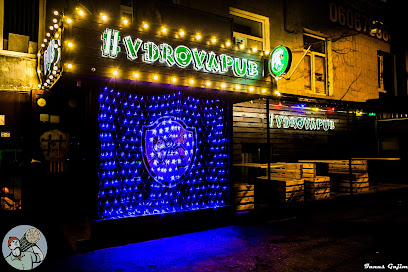
Brother's Pub
Experience the vibrant ambiance and delicious offerings at Brother's Pub, Chișinău's favorite spot for food, drinks, and good company.
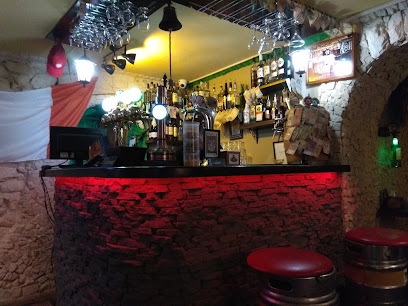
Double Beer Pub
Experience the vibrant nightlife of Chișinău at Double Beer Pub, where delicious food and a wide selection of beers await.
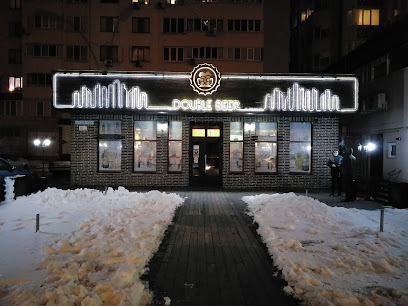
Taproom 27 - A Hoppy Place
Discover the vibrant atmosphere and diverse craft beer selection at Taproom 27, Chișinău's premier destination for beer enthusiasts.

Marlène
Experience the vibrant nightlife of Chișinău at Marlène, the ultimate cocktail bar with innovative drinks and a chic ambiance.
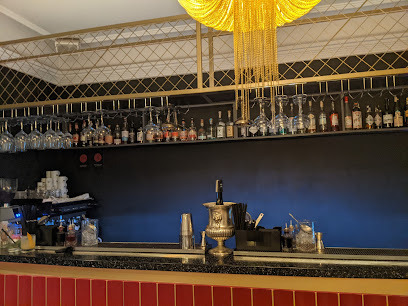
Embargo Wine Bar
Experience the essence of Moldovan viticulture at Embargo Wine Bar, featuring an extensive selection of wines in a cozy, inviting atmosphere.

EscoBar
Experience the best cocktails and sushi in Chișinău at EscoBar, where vibrant nightlife and culinary delights await every visitor.
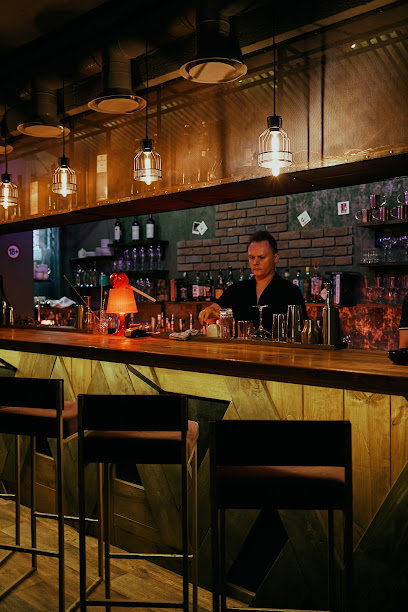
Bruno Wine Bar & Bistro
Experience the perfect blend of exquisite wines and authentic Romanian cuisine at Bruno Wine Bar & Bistro in Bucharest.
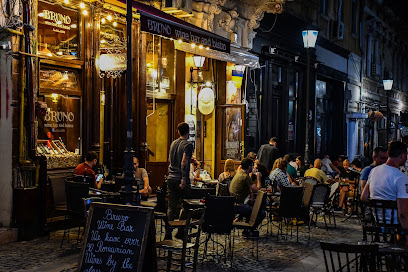
UVA Wine Shop & Bar
Explore the exquisite selection of Romanian wines at UVA Wine Shop & Bar, a cozy haven for wine enthusiasts in Bucharest.
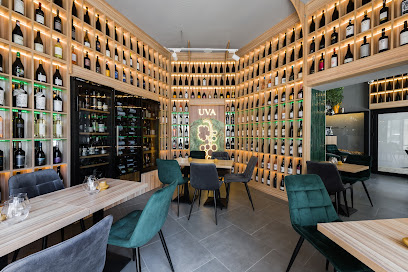
Linia Bar & Grill
Discover the lively Linia Bar & Grill in Nisporeni, Moldova, where delicious food, refreshing drinks, and vibrant atmosphere await every visitor.
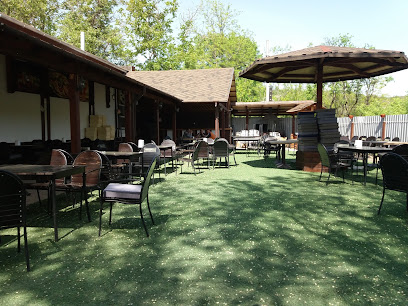
Rockovoy Bar
Experience Chișinău's vibrant nightlife at Rockovoy Bar, where expertly crafted cocktails and a lively atmosphere await you.

Local Phrases about Moldova area
-
- HelloBună ziua
[Boo-nuh zee-wah] - GoodbyeLa revedere
[Lah reh-veh-deh-reh] - YesDa
[Dah] - NoNu
[Noo] - Please/You're welcomeTe rog
[Teh rohg] - Thank youMulțumesc
[Mool-tzoo-mesk] - Excuse me/SorryScuzați-mă
[Scoo-zah-tzuh-muh] - How are you?Ce faci?
[Cheh fahch?] - Fine. And you?Bine. Și tu?
[Bee-neh. Shee too?] - Do you speak English?Vorbești engleză?
[Vor-besht eng-leh-zuh?] - I don't understandNu înțeleg
[Noo in-teh-leg]
- HelloBună ziua
-
- I'd like to see the menu, pleaseAș dori să văd meniul, vă rog
[Ush doh-ree suh vuhd meh-nyool, vuh rohg] - I don't eat meatNu mănânc carne
[Noo muh-nuhnk kahr-neh] - Cheers!Noroc!
[Noh-rohk] - I would like to pay, pleaseAș dori să plătesc, vă rog
[Ush doh-ree suh pluh-tesk, vuh rohg]
- I'd like to see the menu, pleaseAș dori să văd meniul, vă rog
-
- Help!Ajutor!
[Ah-zhoo-tohr] - Go away!Du-te!
[Doo-teh] - Call the Police!Chemati poliția!
[Heh-mah-ti poh-lee-tsee-ah] - Call a doctor!Chemati un doctor!
[Heh-mah-ti oon dohk-tohr] - I'm lostM-am pierdut
[Mahm pyehr-dooht] - I'm illSunt bolnav
[Sooont bohl-nahv]
- Help!Ajutor!
-
- I'd like to buy...Aș dori să cumpăr...
[Ush doh-ree suh koom-puhr] - I'm just lookingDoar mă uit
[Dwahr muh ooit] - How much is it?Cât costă?
[Kaht kohs-tuh?] - That's too expensiveEste prea scump
[Eh-steh preh-ah skoomp] - Can you lower the price?Puteți să scadeți prețul?
[Poo-tehts sah skah-dehts prehts-ool]
- I'd like to buy...Aș dori să cumpăr...
-
- What time is it?Cât este ora?
[Kaht ye-steh oh-rah] - It's one o'clockEste ora unu
[Eh-steh oh-rah oon-oo] - Half past (10)Zece și jumătate
[Zeh-cheh shi joo-muh-tah-teh] - MorningDimineața
[Dee-mee-neh-tzah] - AfternoonDupă-amiază
[Doo-puh ah-mee-ah-zuh] - EveningSeara
[Seh-ah-rah] - YesterdayIeri
[Yehr] - TodayAstăzi
[Ah-stuhz] - TomorrowMâine
[Muhy-neh] - 1Unu
[Oon-oo] - 2Doi
[Doy] - 3Trei
[Treh-ee] - 4Patru
[Pah-troo] - 5Cinci
[Cheen-chee] - 6Șase
[Shah-seh] - 7Șapte
[Shahp-teh] - 8Opt
[Ohp-t] - 9Nouă
[Noh-oo-uh] - 10Zece
[Zeh-che]
- What time is it?Cât este ora?
-
- Where's a/the...?Unde este...
[Oon-deh ye-steh] - What's the address?Care este adresa?
[Cah-reh ye-steh ah-dre-sah] - Can you show me (on the map)?Puteți să-mi arătați (pe hartă)?
[Poo-tehts sah-mee ah-rah-tahts peh hahr-tuh] - When's the next (bus)?Când vine următorul (autobuz)?
[Kuhnd vee-neh oor-muh-toh-rool ow-toh-booz] - A ticket (to ....)Un bilet (către ...)
[Oon bee-let (kuh-treh ...)]
- Where's a/the...?Unde este...
History of Moldova area
-
The region of Moldova, not to be confused with the Republic of Moldova, has a rich history that dates back to antiquity. It was originally inhabited by Dacian tribes before becoming a part of the Roman Empire in the 2nd century AD. After the fall of the Roman Empire, the area was subject to various invasions and migrations, including the Goths, Huns, and Slavs.
-
The Principality of Moldavia was founded in 1359 by Dragoș, a Romanian voivode, and later consolidated by Bogdan I. It became one of the three medieval Romanian principalities, alongside Wallachia and Transylvania. Moldavia was known for resisting Ottoman expansion in Europe and for its rich cultural heritage, including the famous painted monasteries of Bucovina.
-
One of the most notable rulers of Moldavia was Stephen the Great (Ștefan cel Mare), who reigned from 1457 to 1504. Under his leadership, Moldavia experienced a period of cultural and military prosperity. Stephen successfully defended the principality against Ottoman, Hungarian, and Polish forces. Many of the region's most famous monasteries and churches were built during his reign.
-
From the 16th to the 19th centuries, Moldavia fell under Ottoman suzerainty, although it retained a degree of autonomy. During this period, the principality was often ruled by Phanariote princes, Greek administrators appointed by the Ottoman Empire. This era was marked by heavy taxation and political instability but also saw the introduction of Greek culture and education.
-
One of the most significant events in the history of Moldova was its union with Wallachia in 1859, forming the basis of modern Romania. This union was spearheaded by Alexandru Ioan Cuza, who became the first ruler of the united principalities. The unification laid the groundwork for the eventual creation of the Romanian state and the modernization of its institutions.
-
After World War II, the region experienced significant geopolitical changes. The northeastern part of historical Moldavia, known today as the Republic of Moldova, was annexed by the Soviet Union in 1940. The post-war period in Romanian Moldova saw the implementation of communist policies, land collectivization, and industrialization, which left lasting impacts on the region's social and economic fabric.
-
Following the fall of communism in 1989, Moldova went through a period of transition towards a market economy and democratic governance. The region has since become a key area for tourism, known for its natural beauty, historical landmarks, and cultural festivals. Efforts have been made to preserve and promote the unique heritage of Moldova, including its traditional crafts, music, and cuisine.
Moldova area Essentials
-
Moldova area in Romania is accessible by various means of transportation. The nearest international airport is Iași International Airport, approximately 7 kilometers from the city center of Iași. From the airport, taxis and rideshare services are readily available. Alternatively, you can take a train or bus from major Romanian cities such as Bucharest, Cluj-Napoca, or Constanța. The region is also well-connected by road, making it convenient to drive if you prefer renting a car.
-
Public transportation in the Moldova area includes buses, trams, and trains, which are efficient and affordable. Iași has an extensive public transport network, including trams and buses. Taxis and rideshare services like Uber are also available. For intercity travel, trains are a reliable option, with regular services to and from major cities. Renting a car is a great option if you want to explore the region at your own pace.
-
The official currency in Romania is the Romanian Leu (RON). Credit and debit cards are widely accepted in cities, hotels, restaurants, and shops. However, it is advisable to carry some cash, especially when visiting rural areas. ATMs are readily available in cities such as Iași, Suceava, and Bacău. It's recommended to exchange currency at banks or authorized exchange offices for better rates.
-
Moldova area in Romania is generally safe for tourists. However, like any travel destination, it's important to take standard precautions. Avoid walking alone at night in unfamiliar areas and keep an eye on your belongings in crowded places. There are no specific high-crime areas targeting tourists, but it's always best to stay vigilant. Use reputable taxi services and avoid unlicensed cabs.
-
In case of emergency, dial 112 for immediate assistance, which connects you to police, fire, and medical services. Major cities like Iași have well-equipped hospitals and clinics. It is recommended to have travel insurance that covers medical emergencies. For minor health issues, pharmacies are available throughout the region where you can purchase over-the-counter medications.
-
Fashion: Do dress modestly, especially when visiting religious sites. Avoid wearing overly revealing clothing. Religion: Do respect local customs and traditions. Always cover your head when entering churches and monasteries. Public Transport: Do be respectful and offer your seat to elderly passengers. Don't eat or drink on public transport. Greetings: Do greet people with a handshake and a smile. A slight bow of the head is also a sign of respect. Eating & Drinking: Do try local delicacies and accept food offerings graciously. Don't refuse hospitality, as it is considered impolite.
-
To experience Moldova area like a local, visit the local markets where you can buy fresh produce and traditional Romanian goods. Engage with locals, as they are often friendly and willing to share stories about the region's history and culture. Don’t miss visiting the painted monasteries of Bucovina, which are UNESCO World Heritage Sites. For a unique experience, take a stroll through the historic center of Iași, visit the Palace of Culture, and enjoy a traditional Romanian meal at one of the local restaurants.
-
The official language is Romanian. English is widely spoken in tourist areas and by younger generations. Learning a few basic Romanian phrases can be helpful and appreciated by locals.
-
The Moldova area experiences a temperate-continental climate. Summers (June to August) are warm, with temperatures ranging from 20°C to 30°C. Winters (December to February) are cold, with temperatures often dropping below freezing. Spring (March to May) and autumn (September to November) are mild and pleasant. Pack accordingly based on the season of your visit.
Trending Landmarks in Moldova area
-
Bran Castle
-
Peleș Castle
-
Castelul Corvinilor (Corvins' Castle)
-
Voroneț Monastery
-
Palace of Culture
-
Stephen the Great Central Park
-
Metropolitan Cathedral Iasi
-
Sucevita Monastery
-
Rupea Citadel
-
The Clock Tower
-
Moldovita Monastery
-
Humor Monastery
-
Bigar Cascade Falls
-
Gara Mocănița Huțulca, Moldovița
-
The Triumphal Arch
Nearby Cities to Moldova area
-
Things To Do in Drobeta-Turnu Severin
-
Things To Do in Pančevo
-
Things To Do in Belgrade
-
Things To Do in Kragujevac
-
Things To Do in Târgu Jiu
-
Things To Do in Kraljevo
-
Things To Do in Novi Sad
-
Things To Do in Niš
-
Things To Do in Deva
-
Things To Do in Arad
-
Things To Do in Craiova
-
Things To Do in Podujevo
-
Things To Do in Szeged
-
Things To Do in Mitrovica
-
Things To Do in Râmnicu Vâlcea













